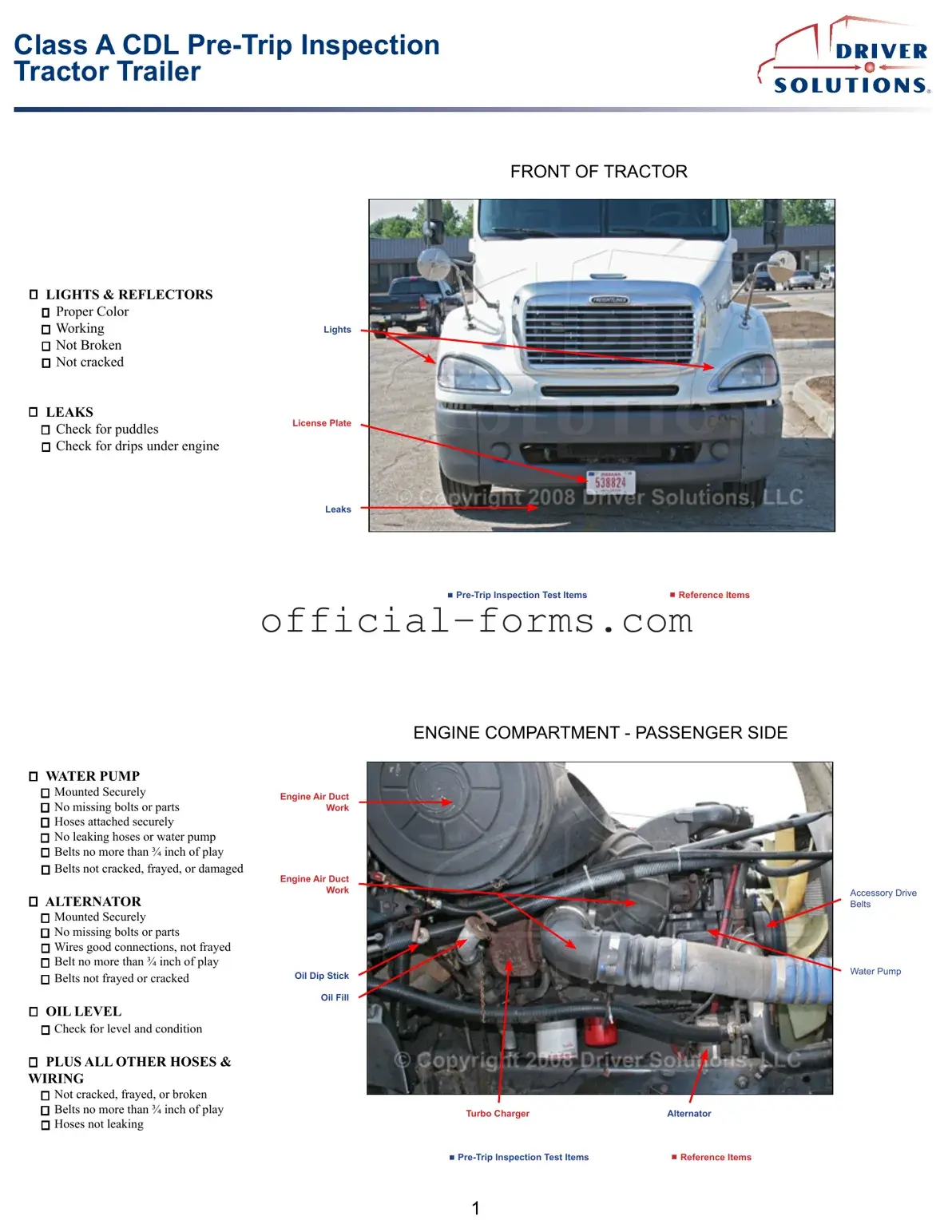Blank Pre Trip Inspection Checklist Form
The Pre Trip Inspection Checklist is a vital tool used by commercial drivers to ensure that their vehicles are safe and roadworthy before embarking on a journey. This checklist helps identify potential mechanical issues and promotes compliance with safety regulations. By systematically reviewing various components of the vehicle, drivers can prevent accidents and enhance overall road safety.
Open My Pre Trip Inspection Checklist Now
